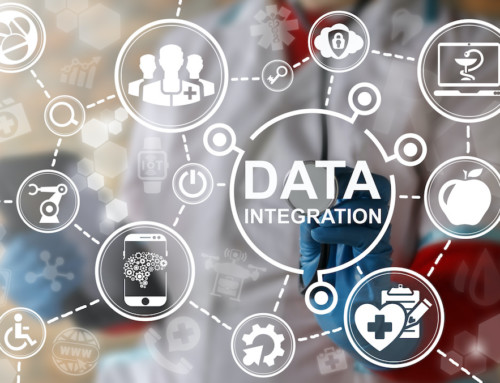Mid Year Technology Overview
It is our pleasure to present the annual WAV Group Mid-Year Technology Review. The
information included was gathered from meetings at NAR’s Mid-Year Conference in
Washington, DC as well as on-going technology reviews we conduct throughout the year.
While not intended as a detailed product comparison, we hope this overview serves as auseful resource for you. Please feel free to contact us if you require a more detailed
vendor/product review or help with any technology decisions for your organization.
Highlights
MLS Technology
Over the past year we have not seen any huge revelations in the MLS vendor world in termsmajor new functionality as we have in years past. The major Internet system players continue to enhance their systems and we have not seen any major stumbles this year. Systems are getting more feature-rich in several areas as interfaces continue to improve and evolve.
Marketlinx, for example, has made substantial improvements in the MLXchange user
interface this year as has Fidelity with their Paragon system. Both systems have always had great power and now are finding ways to make these capabilities more accessible to the average user.
One advancement worth noting, however, is Tarasoft’s successful deployment of a Provincial wide, multi-lingual system for Quebec serving 14,000 subscribers. Tarasoft is also now serving the province of Saskatchewan with a province wide offering.
MLSs that provide their technology in-house seem quite happy and have been able to grow and evolve their systems. There have been substantial improvements in a number of these home-grown products and there is clearly no rush from these MLSs that manage their own technology to go back to vendor provided MLS systems. WAV Group has also observed a healthy integration of “component” technology in all of these systems taking a “best of breed” approach. MLS vendors do this as well, of course, providing integration with many popular third party products.
Mapping technology is truly getting exciting in the MLS world with the integration of street maps with parcel overlays and enhanced aerial options. Each vendor has their own spin but most have made substantial leaps in this arena.
Another area that for years has been rated low by responders to the annual WAV Group MLS Technology survey is the MLS online CMA module. There has been substantial attention put on improving this function in several of the MLS systems in terms of content and ease of use that are great improvements. Rapattoni, Solid Earth, Marketlinx, Fidelity and FBS come to mind in this area. Each vendor has their own spin on this valuation tool but we have seen a number of good improvements from better user interfaces and automated company and franchise templates to easy integration of public record information in the CMA report.
Solid Earth continues to leverage their valuation experience and appears the most progressive in terms of providing automated tools through the MLS system in this area but others, like Fidelity are addressing valuation in the consumer sector to offer products to compete with 3rd party vendors like Zillow. More products like these should be made available directly through the MLS in WAV Group’s opinion. The MLSs have the best data and should be the ones providing the best valuation tools on the market.
The possibility of a National MLS
Something worth mentioning this year is NAR’s push to create a national MLS database.
While not a product that can be presented at this time, the energy and momentum being created in this area will certainly have an impact on all MLS vendors and users of MLS products in the years to come. The basic premise is to create a complete database of all properties in the United States, basically a national public record system that will serve as the foundation of all other services. When a property is for sale it is simply a “category” assigned to an existing record as would be information on the broker listing that property.
NAR says that access into the database could be managed as it is today using a vendor of choice or perhaps there will be a browser option right on the database. There are huge hurdles to overcome for this type of approach to become feasible , though, at the briefings we have attended there is discussion of standardizing everything across the country from the sales status to fines. Certainly these things can be accomplished, but we look at it in a similar way to the current state of “transaction management” systems. Is there a real hunger, need, and desire to have what this technology approach offers? Is there enough pain in the way things are being done today? Is there enough benefit in what is offered by this approach? There is no question this need for expanded regional data availability exists regionally which is why we see the continued consolidation of MLSs across the country as old boundaries become meaningless and true market areas drive MLS expansion. This is expansion based on real need and real market pressure. Is there enough real market pressure to get local MLSs to buy into this national approach? Is there enough real need to get local MLSs to give up the control they are used to? Time will tell, but WAV Group expects these types of changes to occur more regionally for some time. Regions of course can be large,
like statewide approaches in ME, MA, or RI or based on sub-areas within states like Mid-
Florida Regional or Southeast Florida Regional, but this is where we see the pressure being real enough to enact change. Even with this caveats, the approach being explored by NAR is the right approach. Having a national property database under REALTOR® control, for every property, makes perfect sense. How to roll this out in a way that can gain regional acceptance will be the challenge.
Lead Generation – Voice Technologies
Real estate professionals have an ever-increasing need to become more responsive to their clients. Studies from the California Association of REALTORS® and others suggest that clients are now demanding much quicker responsiveness than the industry has historically delivered. There are several new services that help agents respond more quickly and more effectively to clients. These technologies leverage the ubiquity of cell phones and smart phones. One service called RealPing, for example, allows a client to request an agent to call them. In less than 10 seconds the client’s phone will ring and seconds later the agent will be connected live to their client. Many brokers around the country are quickly adopting these types of technologies.
Lead Generation – BLOGS
The use of real estate blogging technologies is growing aggressively. The largest challenge to maximize the effectiveness of this technology is to contribute new content to your blog regularly. Busy REALTORS find it very difficult to find the time to research, edit and post thoughtful posts consistently. One of the leaders in the real estate blogging industry, Real Estate Blogsites is dealing with this problem in two ways. First, they have launched a new writing service to write unique and meaningful blog posts for their customers. In addition they are offering “structured” blogs which allow real estate agents to automatically post their new listings consistently creating new content.
Customer Support – Multi-Lingual Systems
The Pew Institute recently published a study which demonstrated that Spanish-speaking people are much less likely to use the Internet because few websites are multi-lingual. EZ List MLS is addressing this issue by launching a bi-lingual MLS system. Other services like Immobel’s multi-lingual listing websites and IDC Global’s broker systems, also offer services to address the need for multi-language support. While the industry has recognized the need for multi-lingual support for real estate technologies for years progressive vendors are now making these capabilities accessible.
Smart Phones
The use of well-equipped smartphones in real estate is growing at an ever-increasing pace. Real estate professionals are moving away from a combination of paper notes and printouts, cellular phones, PDAs and handheld organizers and to multi-functional smartphones. The business value inherent in smartphones can be linked to widespread adoption, as increasing numbers of real estate professionals recognize that smartphones can play a key role in improving the service they provide to their clients while helping them convert more on-line leads. According to NAR’s 2007 REALTOR® Technology Survey, 28% of REALTORS currently use smartphones. Another 30% plan to purchase or replace their phone in the next 12 months. Within the next 12 months, approximately 60% of the NAR membership—nearly 800,000 real estate professionals—are projected to own a smartphone.
WAV Group will be publishing the WAV Group Client Responsiveness Survey shortly
which highlights the key reasons for the strong growth. In a nutshell, smartphone users believe they have the ability to build stronger relationships with their clients and sell more real estate because they can stay in constant contact. There are also some new smartphones which are driving growth because they have added exciting features like a built-in GPS receiver. There are also several new real estate-specific applications being built. One example, the BlackBerry 8830 offer a built-in GPS receiver eliminating the need for a separate GPS navigation system. Software applications have driven growth as well.
According to the 2006 MLS Technology survey from NAR, 71% of MLSs now have wireless
MLS. In addition to wireless MLS software, there are also many mobile versions of real
estate software available like Top Producer®, mortgage calculators and expense calculators that users can take advantage of.




